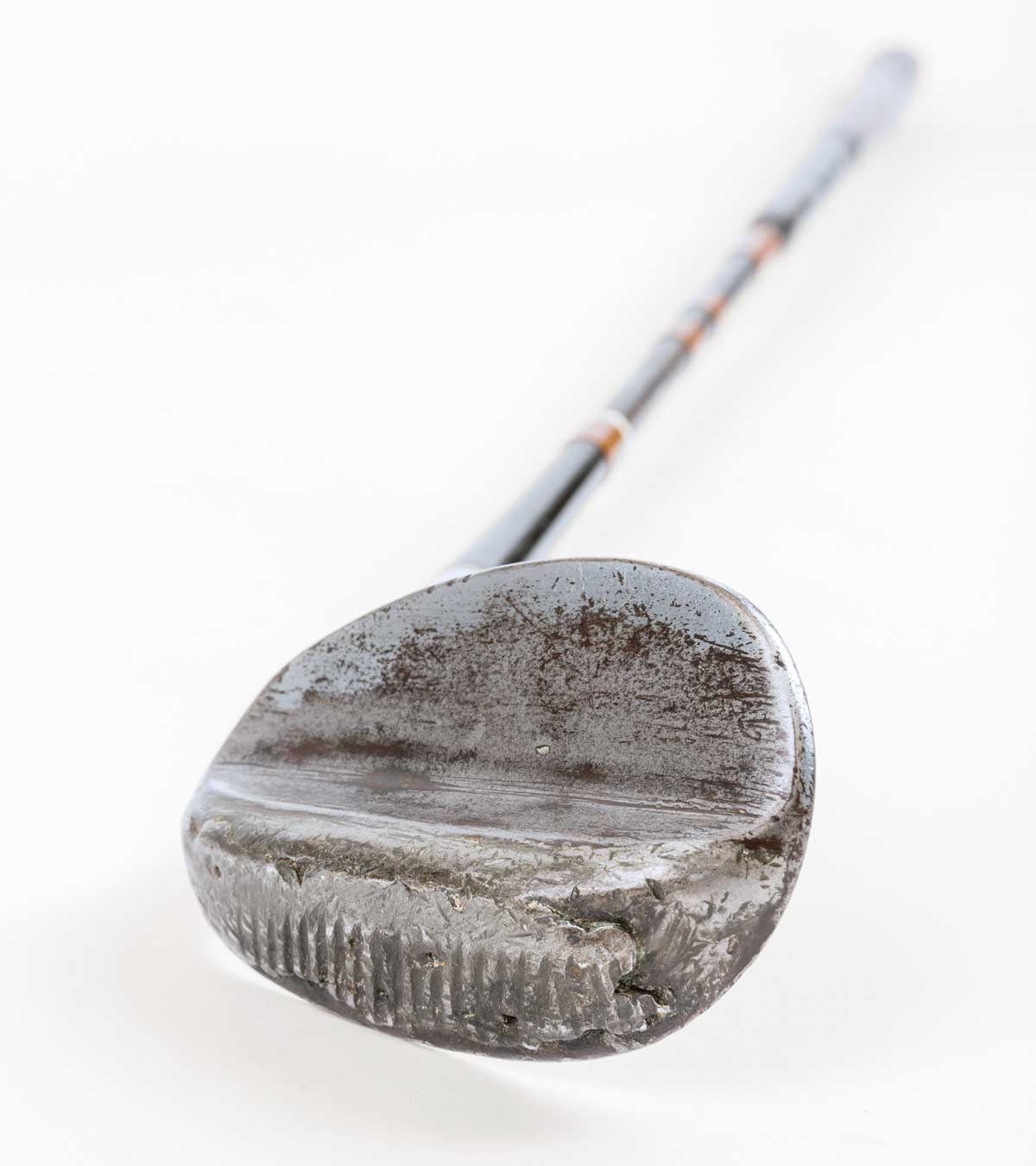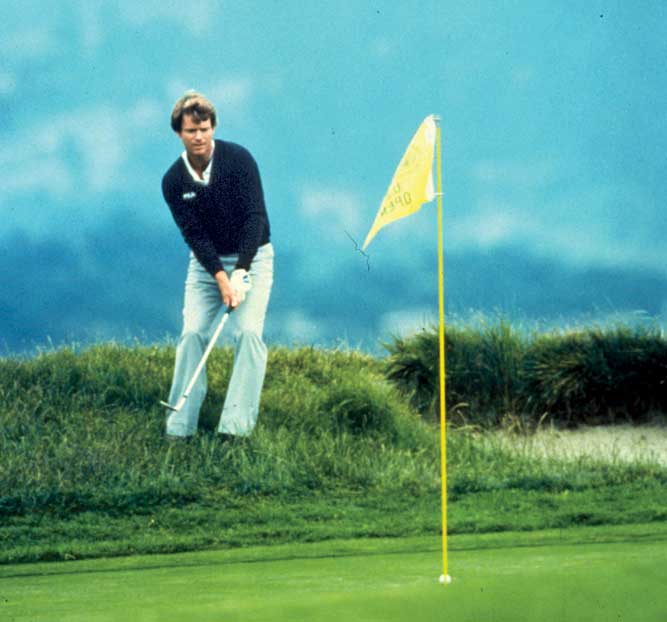The most charming late-night spot on Golf Channel these days is an oldie-but-goodie: Arron Oberholser pitching the xE1 sand wedge, with its proprietary “auto-glide” technology and the promise to get you out of traps “on your very first shot, every time.” Sign me up!
The spot brings to mind the granddaddy of all infomercial clubs, the Alien Sand Wedge, designed by a man named Pat Simmons. If the xE1 has enough flange for three conventional sand wedges, the Alien has enough for six.
I called Simmons for advice years ago, when I was trying to get my own one-off club into the marketplace, a glorified chipper for people with the chip-yips.
“You’re going to sell 50,000 of them,” he said.
“How do you know that?” I asked.
“Because there are 50,000 golf kooks who will buy one of anything.”
We sold 50,000 clubs like that. The next one we had to give away. Two points here. The first is that we, the tribe of golfers, are united in our desperation. The second is that golf innovation comes from the ground up. We identify the problem areas. We can’t putt or chip. We can’t get out of bunkers or the rough. We’re definitely not hitting driver far enough. Golf’s inventors, innovators and manufacturers take it from there. Fill your bag with bigger, faster, stronger. Until you get to the sand wedge. The sand wedge is golf ’s ironing board. It does not change.
Gene Sarazen is often credited with inventing the modern sand wedge. It’s an exaggeration, but the wee gent remains a towering figure in the club’s development. At the USGA Museum, in rural New Jersey, is the homemade Wilson sand wedge Sarazen used in winning the 1932 British Open. Around the corner, the USGA has on display the lone club Tiger Woods has given it, a Titleist Vokey wedge from his 2000 U.S. Open win at Pebble. The Woods wedge has horizontal scoring lines, not the punch-mark dots you see on the Sarazen wedge. Aside from that, its bloodline is obvious.

For decades, Wilson owned wedges like Kleenex owned tissues. In the 1940s, during the war and after it, there was no real club development. Then came Sam Snead, stiffing shots with Wilson wedges in the 1950s, and Arnold Palmer, holing bunker shots with Wilson wedges through the early 1960s. In the early 1970s, when Tom Watson was a young pro, everybody and their mother wanted Wilson wedges. The Patty Berg Wilson Staff Fluid Feel sand wedge, with the red dot, was played by innumerable women golfers, and was a counterintuitive high-status club for some males of the species. The Berg wedge was pretty much the Sarazen wedge, but somehow daintier. A mark of love for any wedge, then and now, is blurred, sand-smoothed lettering on its sole.
When I asked Watson about Wilson wedges in his early years as a pro, he said, “I was always searching for one.” He then told the story of being invited to David Graham’s garage in Dallas, during the Byron Nelson tournament, circa 1975. Graham was collecting Wilson wedges, and not as a hobby. At Graham’s invitation, Watson took one and put it in his bag right away. That’s the club Watson used when he holed out, from that patch of hay beside the 17th green, in the finale of his 1982 U.S. Open win at Pebble.

In 1940, Sarazen gave his secret weapon wedge to the USGA. Today you have to wear surgical gloves to handle it. But anyone who has waggled it will tell you exactly what it feels like: a sand wedge.
I asked the USGA people for the club’s specs and they sent it to their lab. Loft: 58.5 degrees. Lie: 63 degrees. Length: 35 inches. Bounce: 13.5 degrees. You know what that makes it? A mainstream modern sand wedge, right down to its steel shaft. If you put your head on the carpeted floor at the USGA Museum, you can look up and see the loft stamped on the bottom of Tiger’s 2000 wedge: 58. It’s amazing how much Sarazen got right. He was a genius.
There’s one club at large in golfdom that the USGA covets above all others: Tom Watson’s Wilson wedge. That is, the grandchild of Gene Sarazen’s Wilson wedge. The DNA in that Sarazen club is astounding. It’s a force field.








